Bulgaria
The international festival of masquerade games “Surva” in Pernik is the largest in Bulgaria and the Balkans. It is the most authoritative performance of traditional folk games and customs with masks in Bulgaria and Europe. The festival popularizes variants of an ancient ritual that have reached today, part of the Bulgarian folklore tradition. With its competition program, the festival meets survakars, kukers, babugers, jamalars and many others. Thousands of tradition bearers from all ethnographic regions of Bulgaria and guests from Europe, Asia and Africa participate in the festival competition every year. Participants come to Pernik for the emotion, the fun, to share the magic of “Surva”, to feel renewed, to wish each other health and luck. The festival has been organized by the Municipality of Pernik since 1966. It has had international status since 1985. XXX edition of the festival will be held from 26th to 28th January, 2024.
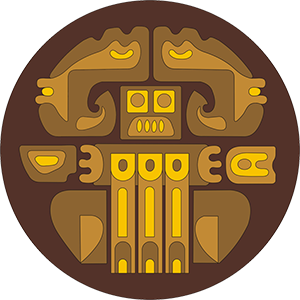
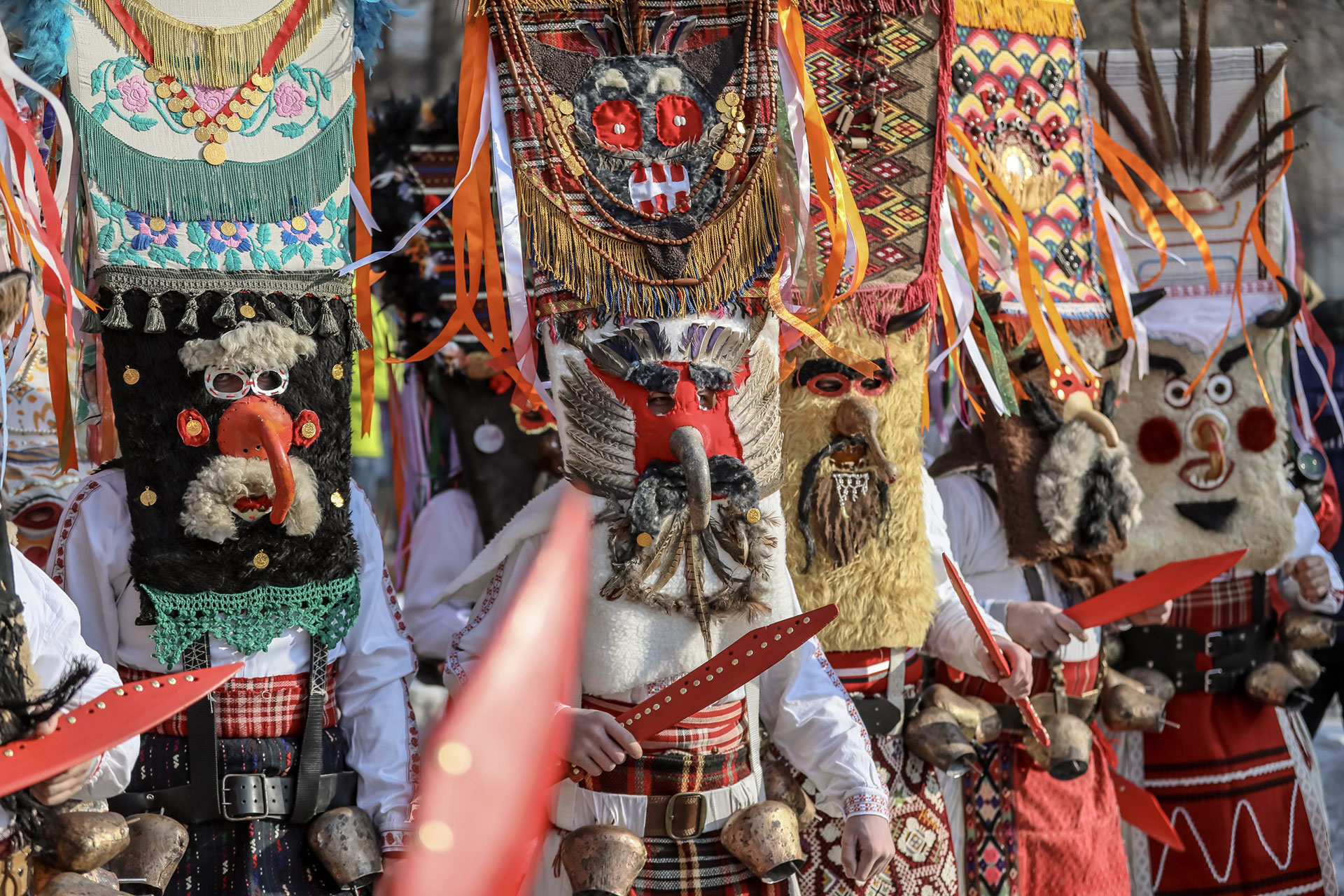

Ice rink in the center of Ruse
The Ice rink is located in the center of the city of Ruse, in front of the city opera house. The rink offers its visitors a magical winter experience for a modest fee. Skates in various sizes are available on site, as well as auxiliary penguins and bears for the more inexperienced ice skaters.
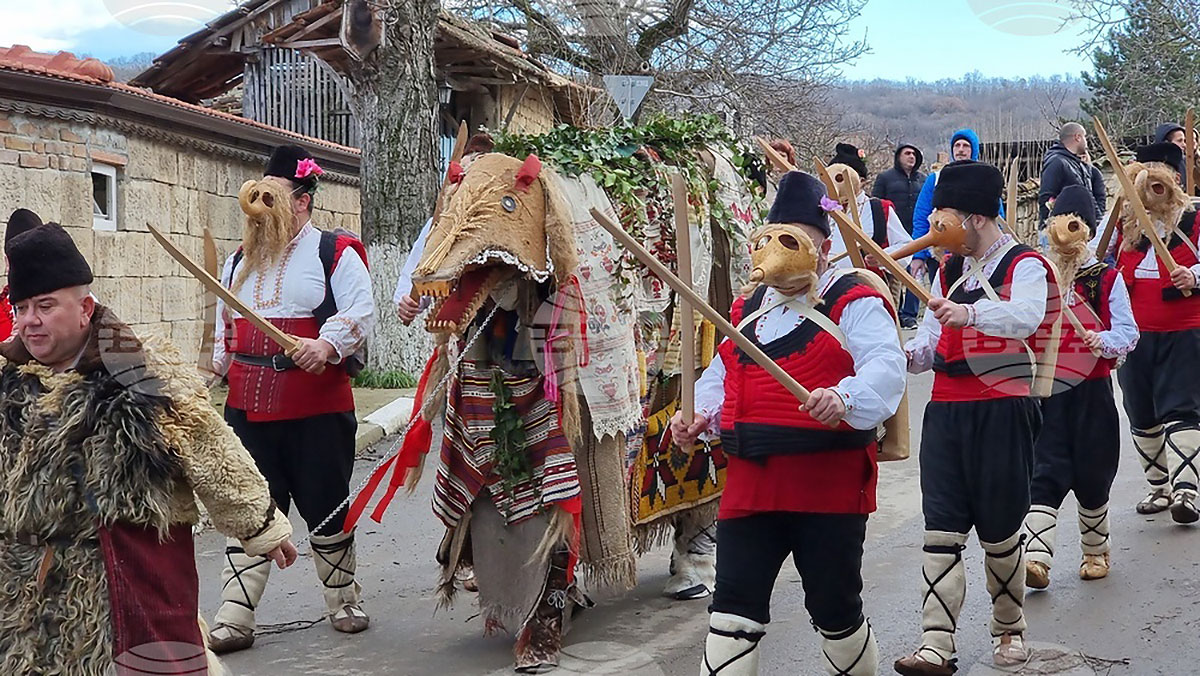
The custom Jamal from the village of Koshov
The custom Jamal banishes evil forces and blesses for health and prosperity in the Ruse village of Koshov. The masquerade game was entered in 2010 in the national representative list of intangible cultural heritage “Living Human Treasures-Bulgaria”. The tradition is performed on Ivanovden (on 7th January).
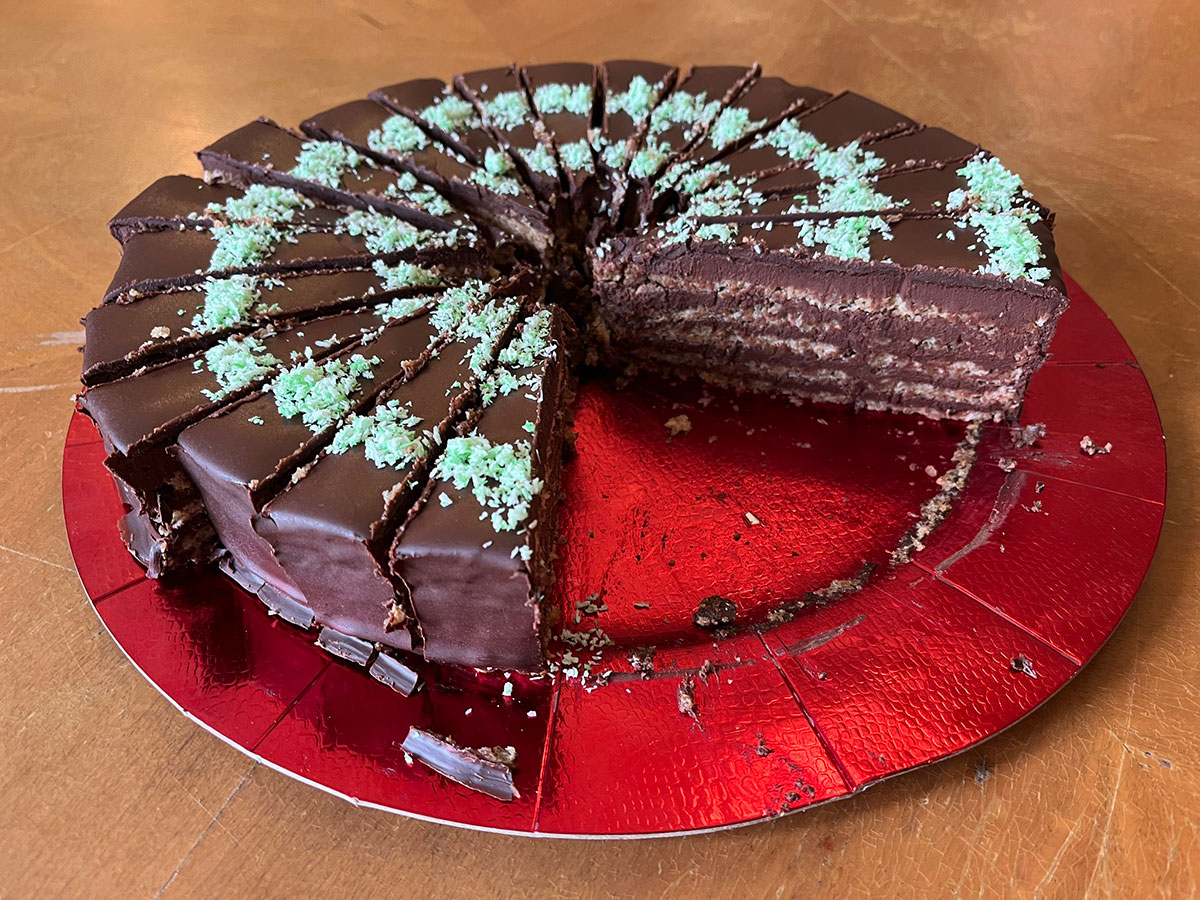
Garash Cake Recipe
For the cake pans:
8 pcs. egg whites
200 g of sugar
200 g of ground walnuts
20 grams of flour
The egg whites are beaten, then the sugar is added twice. Add the ground walnuts and flour while stirring gently with a wooden spatula. Form five cake pans, and bake them at 160 degrees Celsius for about 8 minutes.
For the chocolate cream:
300 ml. cream
200 g of dark chocolate
The cream is warmed in a water bath, and the broken dark chocolate is added to it. Stir until a homogeneous mixture is obtained. Cool for 6 hours and whip.
For the frosting:
200 g of dark chocolate
It is melted in a water bath, adding 3-4 tablespoons of oil.
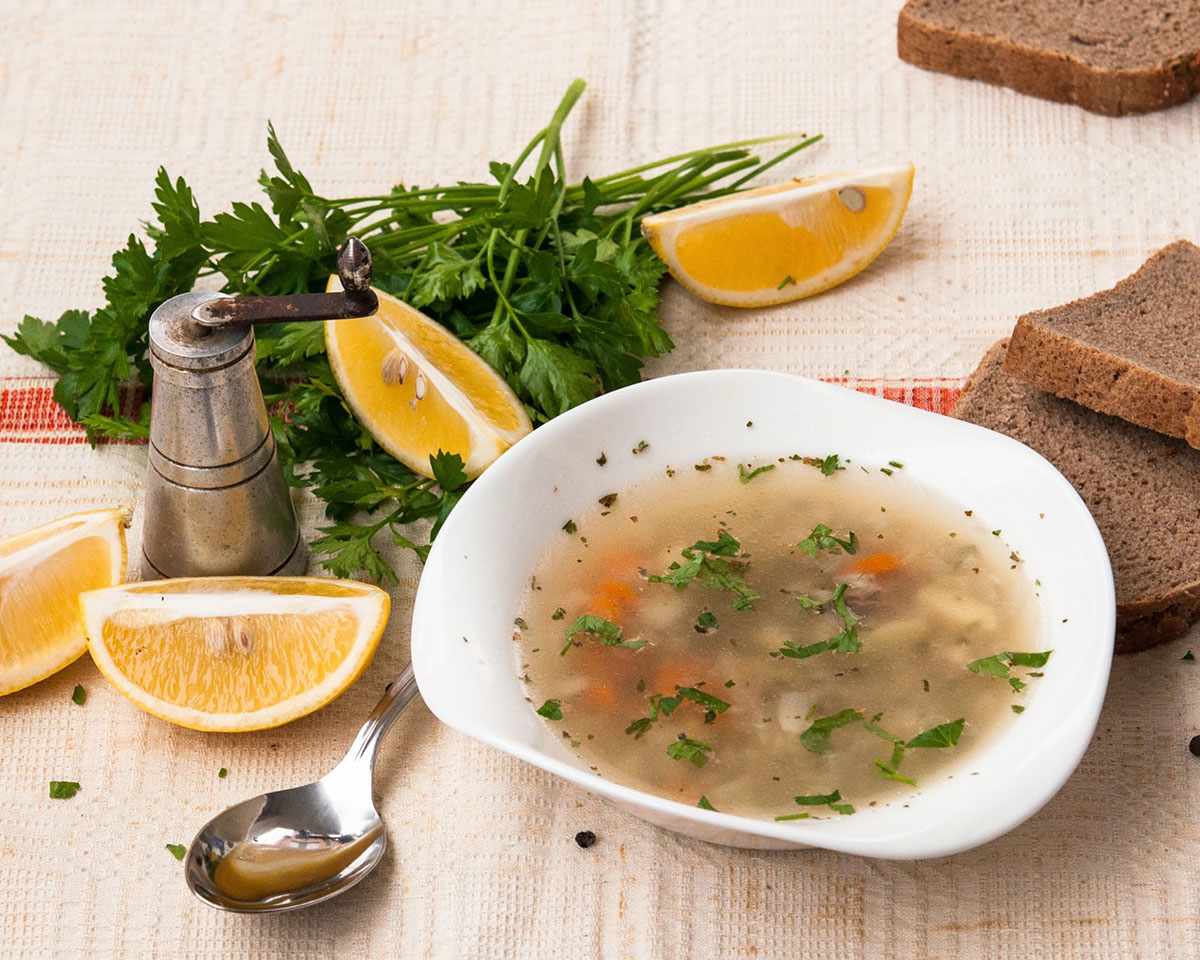
Fish soup Recipe
Products:
Fish – catfish, whitefish, carp and other small fish
2 onions
2 carrots
1 green pepper
1 red pepper
chilies to taste
2 tomatoes
jagorida (sour small grapes) (or sour plums, maybe lemon)
1 tbsp. salt
pepper
hogweed
If desired, a medium-sized mashed potato can be added.
Preparation:
When the water for the soup boils, add the salt, add the onions, carrots and peppers, chopped finely. When the vegetables are almost cooked, add the tomatoes and the chilies: the tomatoes are grated, and the chilies are whole or chopped. After the chili peppers change color, add the fish. When it is already cooked (10 minutes is enough), the fish is taken out, deboned and returned to the soup together with the yagorida. Just before removing from the fire, add hogweed.
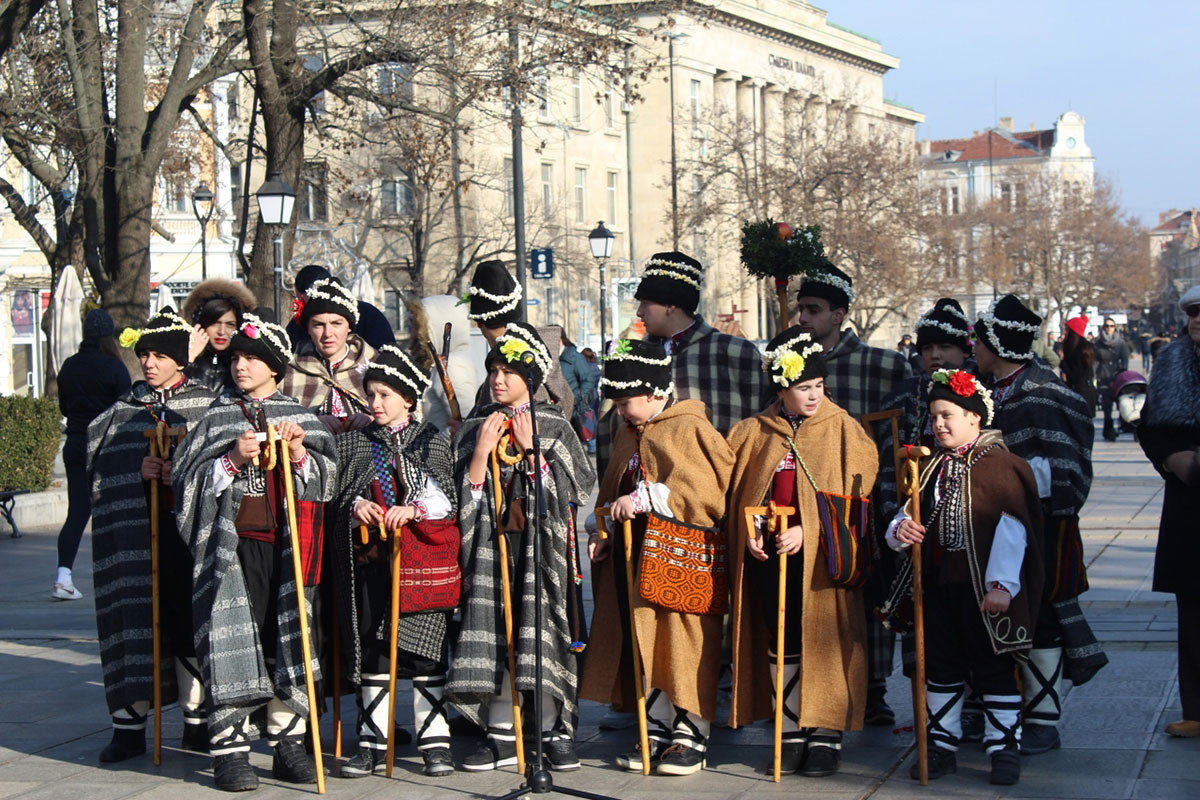
Christmas in the center of Ruse
Reenactment of caroling with songs and names of carolers from community centers in the Ruse region is held every year in the center of the city of Ruse.
Traditionally, the reenactment is done on the eve of the holidays, so that there will be health and prosperity for the inhabitants of the city.
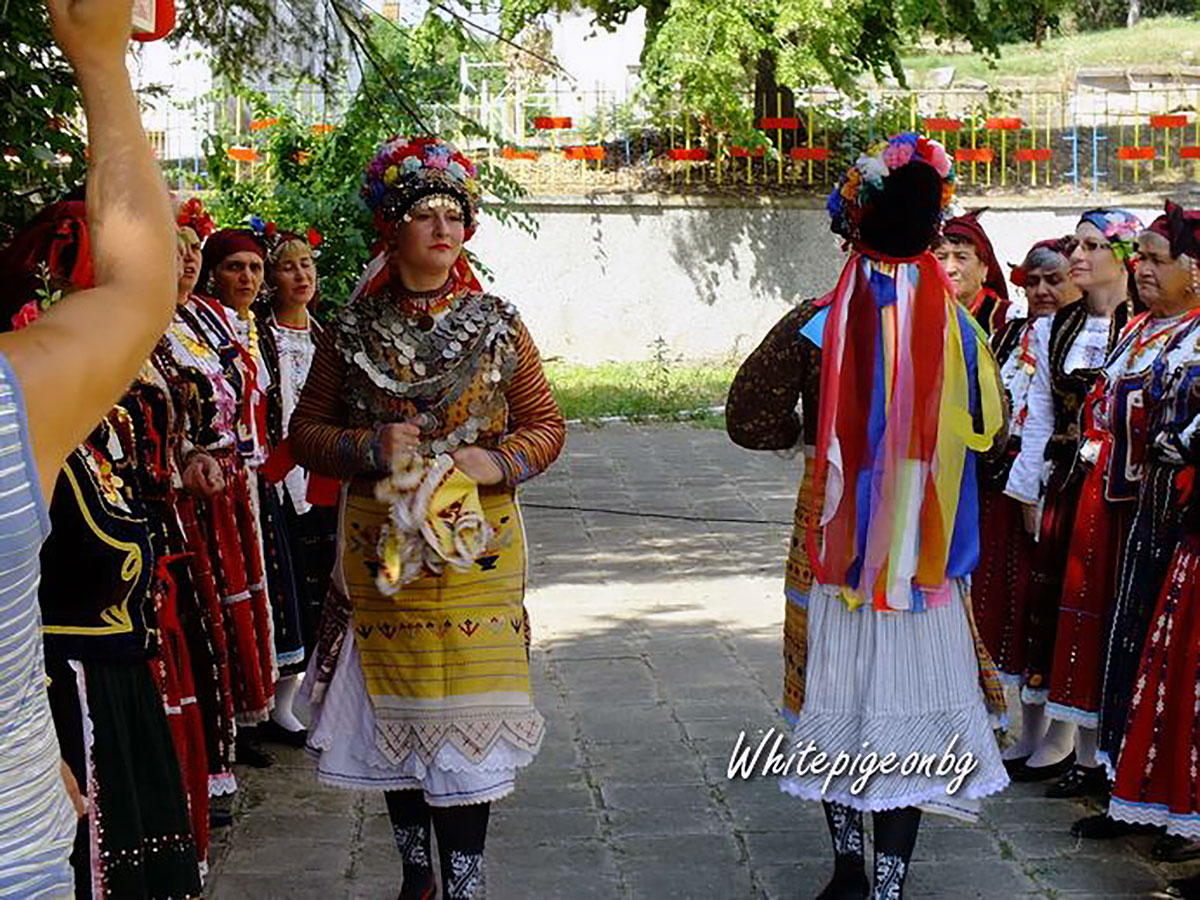
Buenets from the village of Staro Selo
The custom Buenets is performed on Lazarov Day (in April) in the village of Staro Selo. It is a bachelorette party and takes its name from the nature of the dance itself, which is a “boisterous” dance – a fast tumbling dance. The Buenets from Staro Selo is included in the intangible cultural heritage of UNESCO.
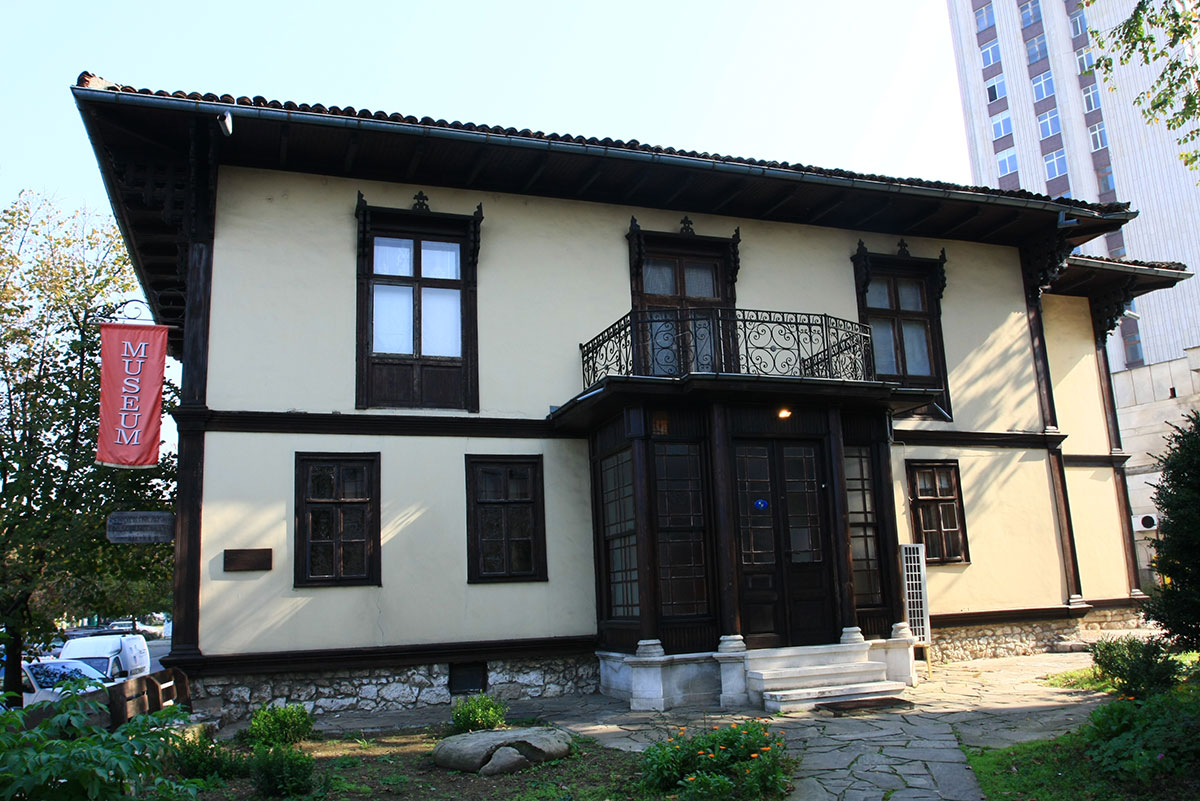
Kaliopa’s House Museum – 19th century urban culture / 19th century urban everyday life
The house where is the exposition of the Museum of Urban Life was built in the 1960s and originally served as a Prussian consulate. After the Liberation of Bulgaria (1878), the house became the property of the rich Ruse merchant Stefan Kamburov – a prominent citizen, participant in the committee for accepting the Bulgarian Exarchy in Constantinople (1870). At his invitation, in 1886, the artist Kar de Schauersberg came from Bucharest to Ruse, who painted the walls and ceilings of the second floor, as was fashionable at the time. The frescoes and Schauersberg’s signature are preserved. The exposition in the Museum of Urban Life is from a later period, compared to the architectural style of the house, and emphasizes the signs of Modernity in the everyday life and festivities of the people of Ruse from the end of the 19th and the beginning of the 20th century. The Museum of Urban Life is open to visitors in 1987. This is the first ethnographic museum in Bulgaria, which presents urban (bourgeois) culture.
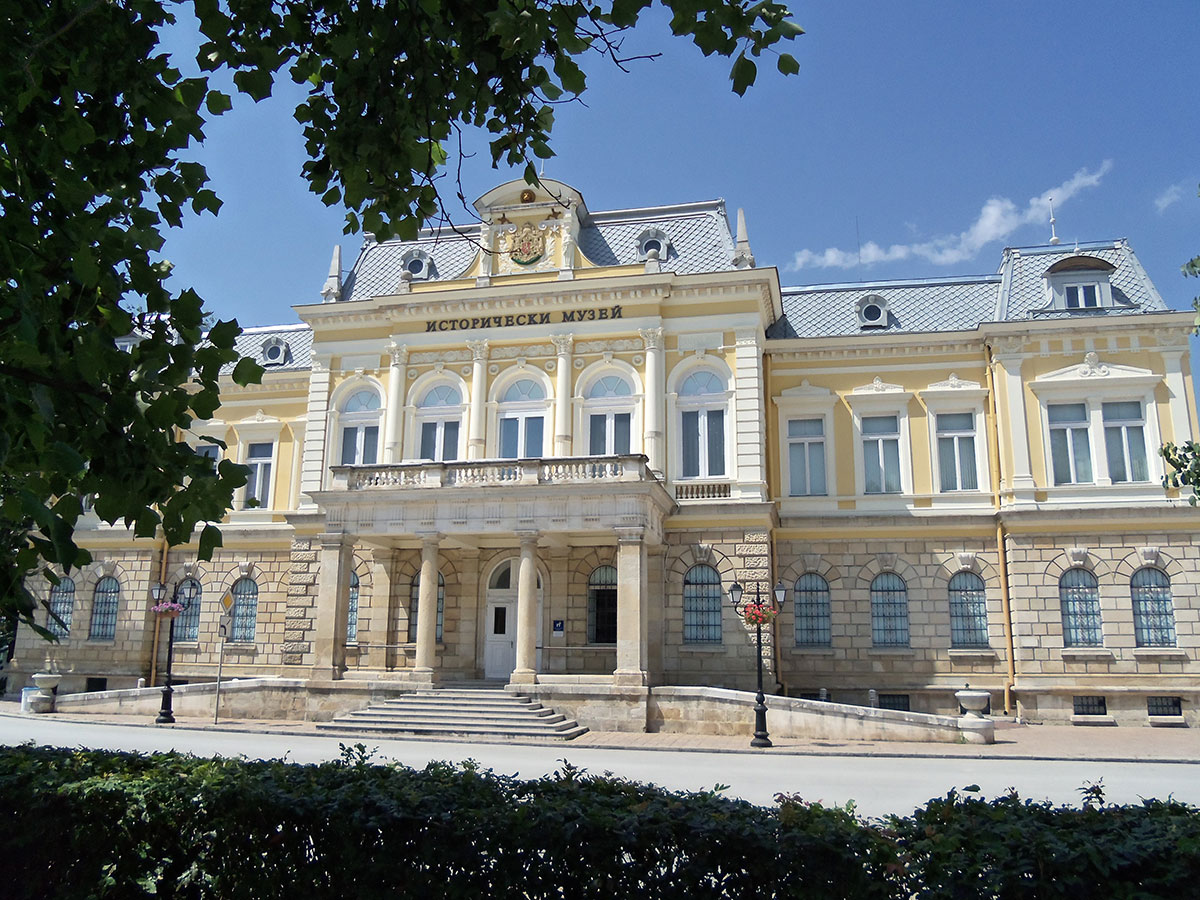
Museum of History
The building of the History Museum was built in 1882 according to the project of the Austrian architect Friedrich Grünanger. It was built for the District Administration. After the changes, in 1946, it became the District Court, and since 2007, after reconstruction, the Historical Museum is housed here. The halls are located on two floors, and in them you can see exhibits from the archaeological sites from Ruse and the region and part of the armament from the Liberation to the Second World War. The museum also has a Lapidarium – a stone garden with various epigraphic monuments.
The Museum of History presents archaeological heritage from the Prehistoric era and Roman time. There is also a Military Glory Room in the museum and the reserves of Ivanovo Rock-Hewn Churches and the Medieval Town of Cherven are presented. There are also two rooms for temporary exhibitions.
In the most representative showcase, the Borovo treasure, discovered by chance in 1974 in the Borovo region, is on display. It represents a ritual set of 5 dishes for royal celebrations. It is made of silver with gilding and dates back to the 4th century BC. It consists of three rhytons with horse, bull and sphinx finials, a jug with depicted relief scenes and a large bowl (krater). Rhytons are used for drawing wine, drinking from the hole in the middle between the animals’ legs.